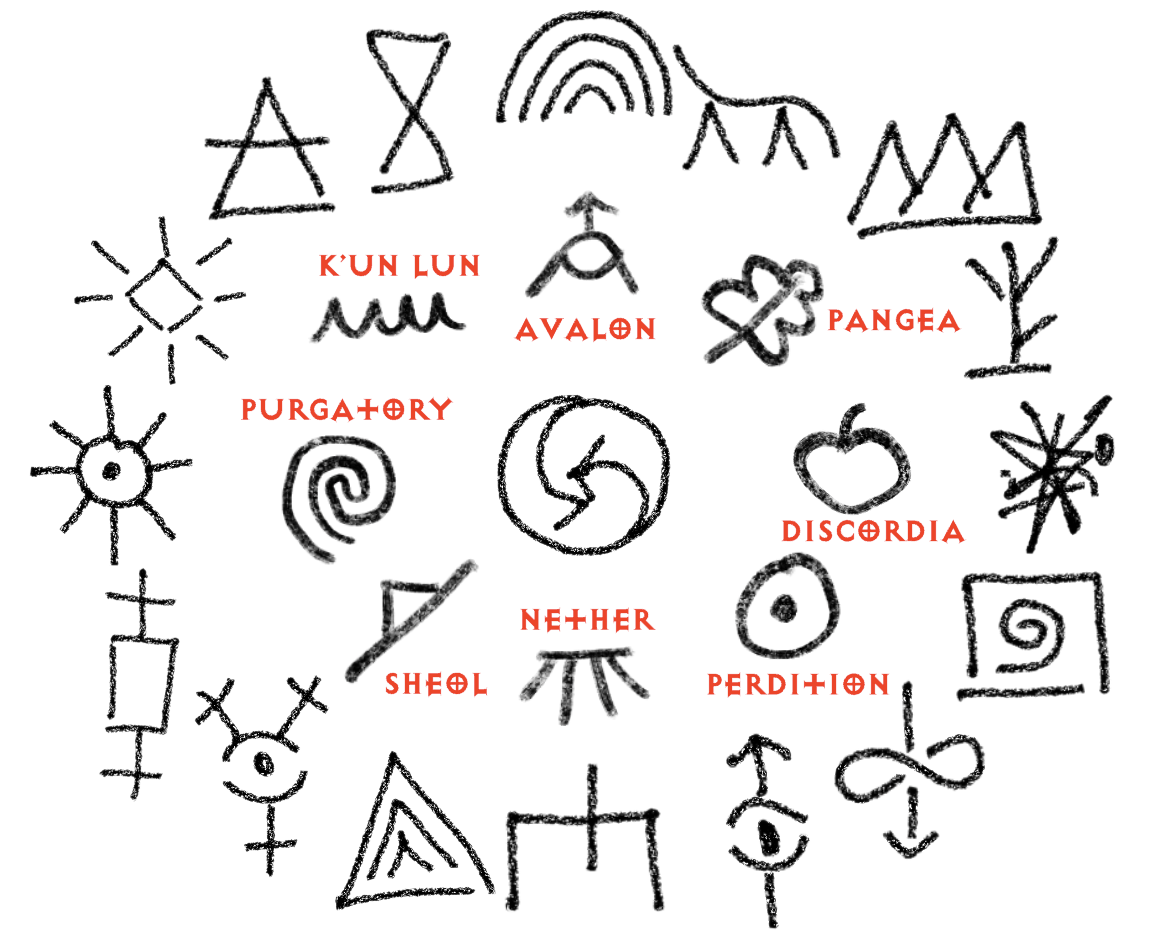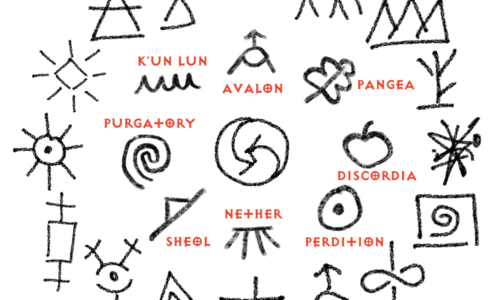The Planes of Cordance
The following interview was recorded by a mimir. In this interview, Mill Boyers, a prime halfling cartographer and Aide of the Fraternity of Order interviews a tiefling known as Leir the Explorer, of the Athar, about some alleged new Outer Planes he has discovered. Whether or not Leir has discovered the dark of something truly big or is merely barmy is as yet unknown.
MB: Hello, is this thing on? Yes? Well, then, this Mill Boyers, Aide of the Fraternity of Order, here today interviewing Leir the Explorer, a tiefling Athar with some quite extraordinary claims. Is that correct, Leir?
L: Yes.

MB: Hmm. Yes, well…Your claim is that you have found eight new Outer Planes hidden within the great ring. What proof do you have of this?
L: I’ve been to them. They do exist.
MB: Do you know the Ralopolises? The Athar seem to have a lot of explorers these days…
L: I am familiar with Burbank, yes, although I’ve never met him. The reason why there are so many Athar explorers is simple really. The other factions seem content to accept the lies the powers have told them about the nature of the planes. We Athar know the truth, and seek the real dark of the planes. The eight planes of neutrality have been hidden from planewalkers due to a direct conspiracy on the part of the so-called “gods.”
MB: Well, this interview really isn’t about faction beliefs or politics. I heard a seminar from a Mr. Synjyn the Exile where he claimed there are actually 27 outer planes. Do you agree?
L: [Laughs] I think he’s definitely on the right track, but from my count there are 25 outer planes.
MB: Why, then, have these planes remained hidden from planewalkers?
L: As I told you, it was a conspiracy from the false powers. When planewalkers first invaded the planes, the powers wanted some territory left without a bunch of factions and planewalkers infesting it, the way the known planes have been infested. The false gods of different alignments obviously couldn’t agree on what should remain hidden. As a compromise, they decided to obfuscate the planes with strong true neutral tendencies. That’s why there’s a gap in the way the planes are drawn.
MB: What gap?
L: [sound of a dagger being drawn]. You see, all planar sages agree that the planes are designed around two moral concepts: Law vs. Chaos, and Good vs. Evil. [Leir then carves the symbols for Mechanus and Limbo opposite one another, and the symbols for Elysium and the Gray Waste opposite one another like 4 points on a compass].
Now, when you combine them, you get law plus good [carves symbol for Mount Celestia], chaos plus good [carves symbol for Arborea], chaos plus evil [carves symbol for the Abyss], and law plus evil [carves symbol for Baator]. In the middle of the whole thing, you get true neutrality [carves symbol for Outlands in the centre of the circle]. These what we have here are what some sages call “alignments.”
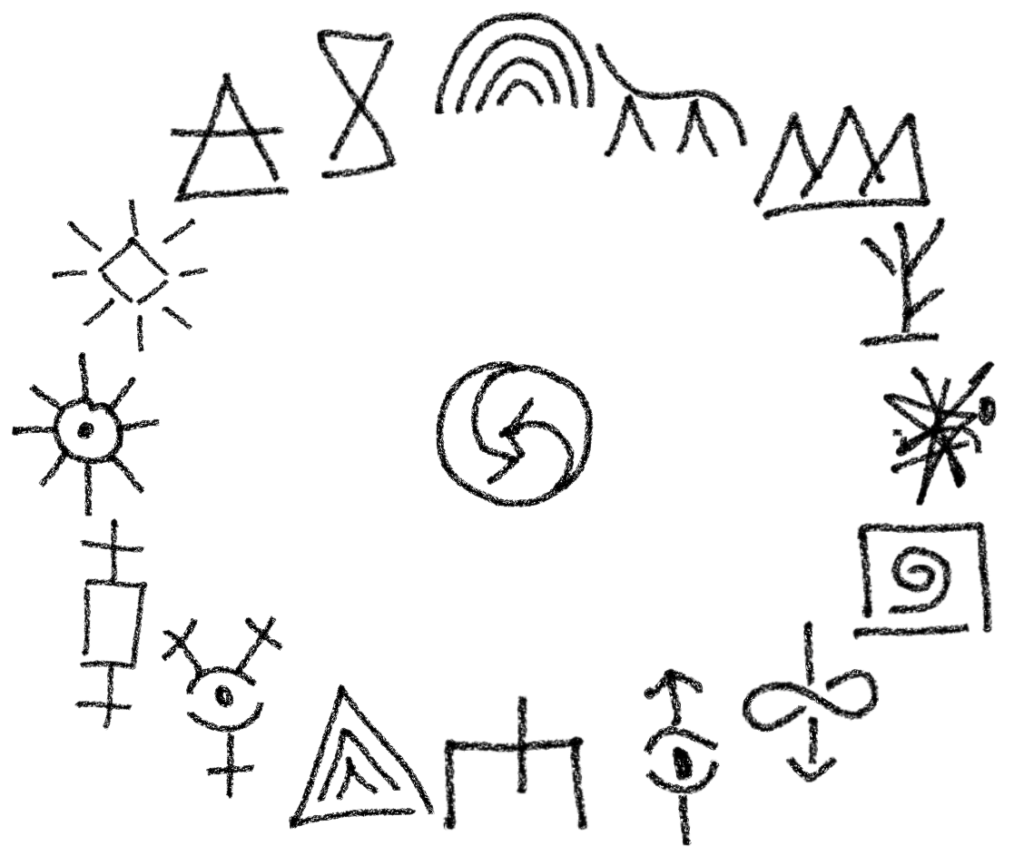
Apparently, each of us subscribes to one of these world views. Sometimes, however, there are grey areas where one “alignment” blends in with another. These are: [carving the symbols for each plane in its place] Arcadia where lawful neutral becomes good, Bytopia where neutral good becomes lawful, Beastlands where neutral good becomes chaotic, Ysgard where chaotic neutral becomes good, Pandemonium where chaotic neutral becomes evil, Carceri where neutral evil becomes chaotic, Gehenna where neutral evil becomes lawful, and Acheron where lawful neutral becomes evil. But look at what we have now. Something is still missing…
MB: Ah! There are no planes representing the spaces where True Neutrality blends with any other “alignments.”
L: Exactly!
MB: But the Outlands connects to all the other planes, without any planes in-between. Are there gate-towns to these new planes you have discovered?
L: Well, yes and no. There are gates to these planes on the Outlands, halfway between the Spire and the known gate-towns. But not all of these gates actually have towns around them. They’re all carefully hidden by the powers.
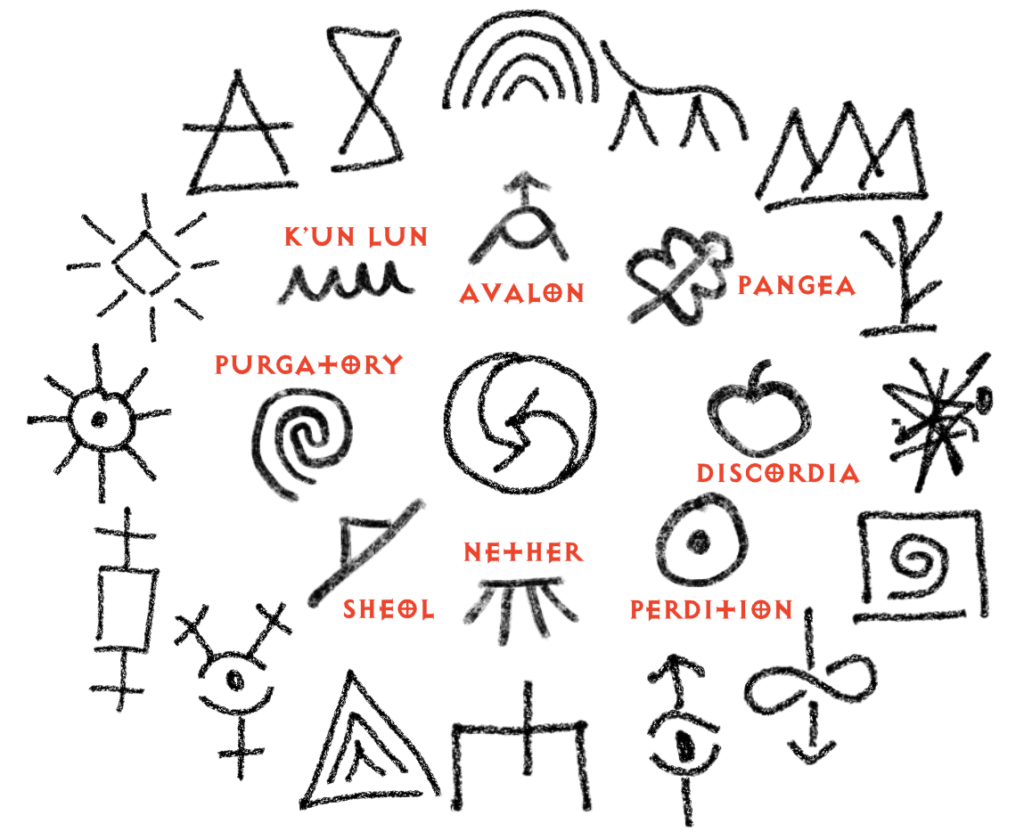
MB: But others besides yourself have explored the Outlands. Why have they not found these gates?
L: Probably because they were afraid of the curses of the false gods. I have no such fear. As you know, we Athar seem to have a resistance to curses due to our denial of the powers.
MB: Either that or you are so cursed already, one more doesn’t make a noticeable difference…

L: [growls] Do you want this interview or not?
MB: Yes, yes, my apologies. Simply stating an alternative hypothesis. Ahem. Anyway, could you describe some of these planes to me?
L: Grrr…very well. On the Outlands, near the River Ma’at, is a mountain named Shangri-la. On top of that mountain is a monastery that dutifully guards the secret of the portal to K’un Lun. K’un Lun is the plane between lawful goodness and neutrality. It exemplifies the most positive aspects of neutrality–specifically, it is the plane of moderation. Everything is moderate and laid back here. Almost boring. At least that’s the way it looks at first.
The land in K’un Lun is mostly mountainous. Many temples and monasteries are at the tops of these mountains, with small villages and terraced crops in the valleys. It has several notable realms. The most prominent is the Land of the Immortals. The most honourable followers of the Celestial Bureaucracy dwell here. Lady Meng, wife of Shang-Ti, rules the place. A peach tree grows near her palace, and the chant is it grants immortality to those who eat it. Some immortals of note here are Fu Hsing, K’ung Fu-Tzu, Lao Tzu, and the Pa Hsien.
Some other powers have set up kip here, too. Mithra, a Persian power; Ilmater of the Finnish pantheon; and the Greco-Roman “goddess”, Nike (who often doesn’t quite mesh with the chaotic home of the other Greek powers in Arborea).
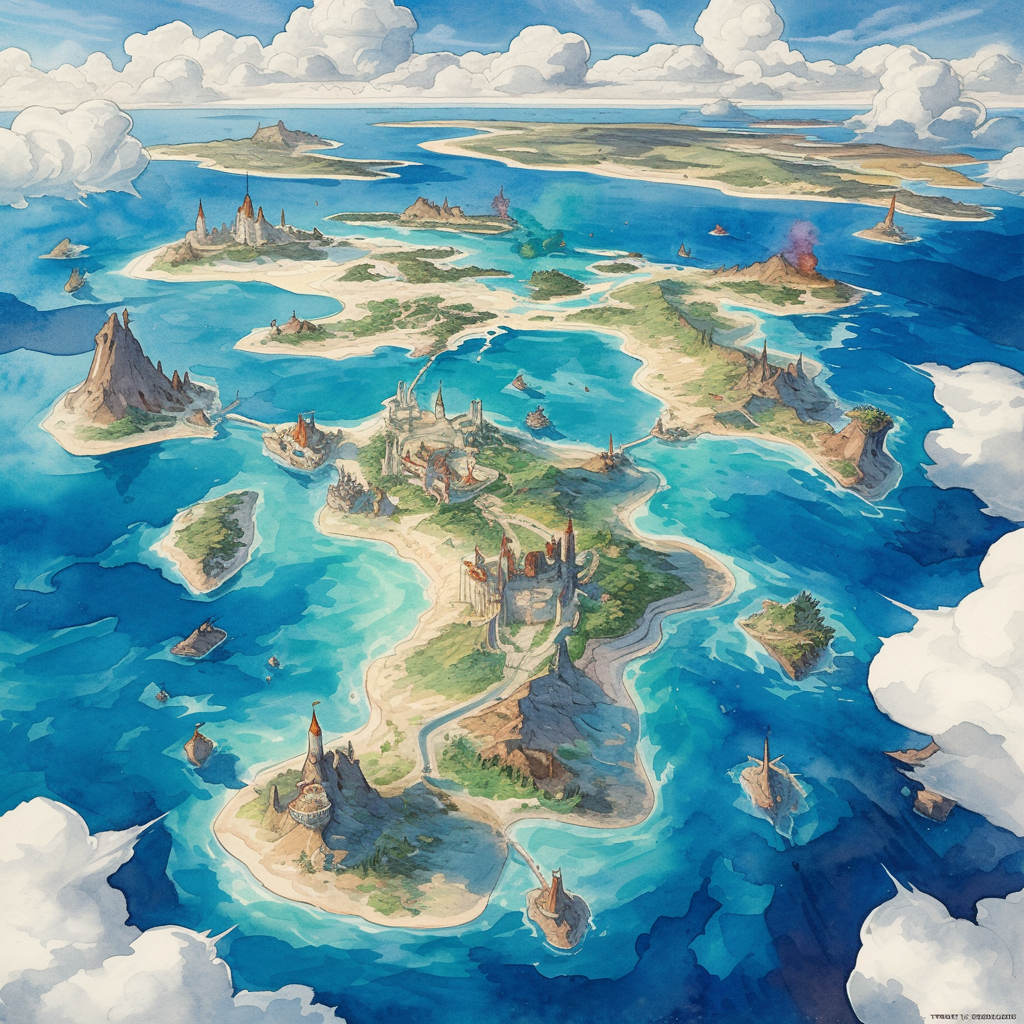
The next one, Avalon, is the plane between true goodness and true neutrality. It’s the home of petitioners who, while definitely preferring good over evil, still think there’s such a thing as being too moral. They’re friendly enough sods, but they aren’t as afraid of crossing the line between good and evil as the locals in, say, Elysium.
MB: Avalon…now why does that sound familiar?
L: Well, Avalon is also the name of a realm in Thalasia. The realm in the fourth layer of Elysium has the only portal to Avalon outside of the Outlands, too, just to really confuse planewalkers. The gate to Avalon on the Outlands is on an island in a lake smack dab between the realms of Sheela Peryroyl and Tir na Og. The island is always clouded with mist and fog, and you really can’t even find it until you run right into it. Anyway, the plane of Avalon is mostly water with a bunch of islands scattered here and there.
A few Celtic powers have a realm here: Dunatis and Nuada are frequent visitors at least, if they don’t actually live here, and the “goddesses” Brigid and Rhiannon have realms on a few of the islands. There’s also an underwater realm named Po where everyone can breathe the water like it was air. The petitioners and powers there are from some Prime land called Polynesia.
Somewhere in the realm of the Norns, guarded by these creatures, is the gate to the next plane, Pangea. Pangea is between neutral and chaotic good. Without a doubt it’s the wildest, toughest, most savage plane I’ve ever been to.
MB: Sounds like the Beastlands.
L: Not quite. The Beastlands are the planes of life in all its myriad forms. Pangea is even more primal than that. It’s the plane of nature, benevolent or destructive, but always wild. In fact, I think many of the cutters who’ve described the Beastlands may very well have been in Pangea instead, and just not even known about it. I’ve heard it on good authority that Ferrix and Quorlinn actually dwell here, not the Beastlands. I don’t know for sure, but I wouldn’t doubt it. The Beastlands is a plane of goodness tinged by chaos, but Pangea is a neutral plane only slightly moved in the direction of chaos and good. Anyhow, no necromantic spells will work in Pangea…even the beneficial ones. You have to rely on your body’s natural healing process here. Nothing’s allowed to interfere with the natural cycle here. Another weird thing about this plane…[sound of a sword being drawn]…see this?
MB: Yes.
L: First time I went for it, I drew a big wooden club instead.
MB: I don’t understand.
L: Anything technologically more advanced than stone age transforms into its closest stone-age equivalent here. Technology’s not allowed. My armour turned to hide, my sword to a club, and my silver arrows to stone. I couldn’t remember how to work metal there, either. Any technologically advanced areas I was proficient at disappeared while I was there. But my wilderness skills–tracking, hunting, survival–seemed almost twice as effective here. All kinds of prime creatures that ever existed or ever will can be found in abundance in Pangea.
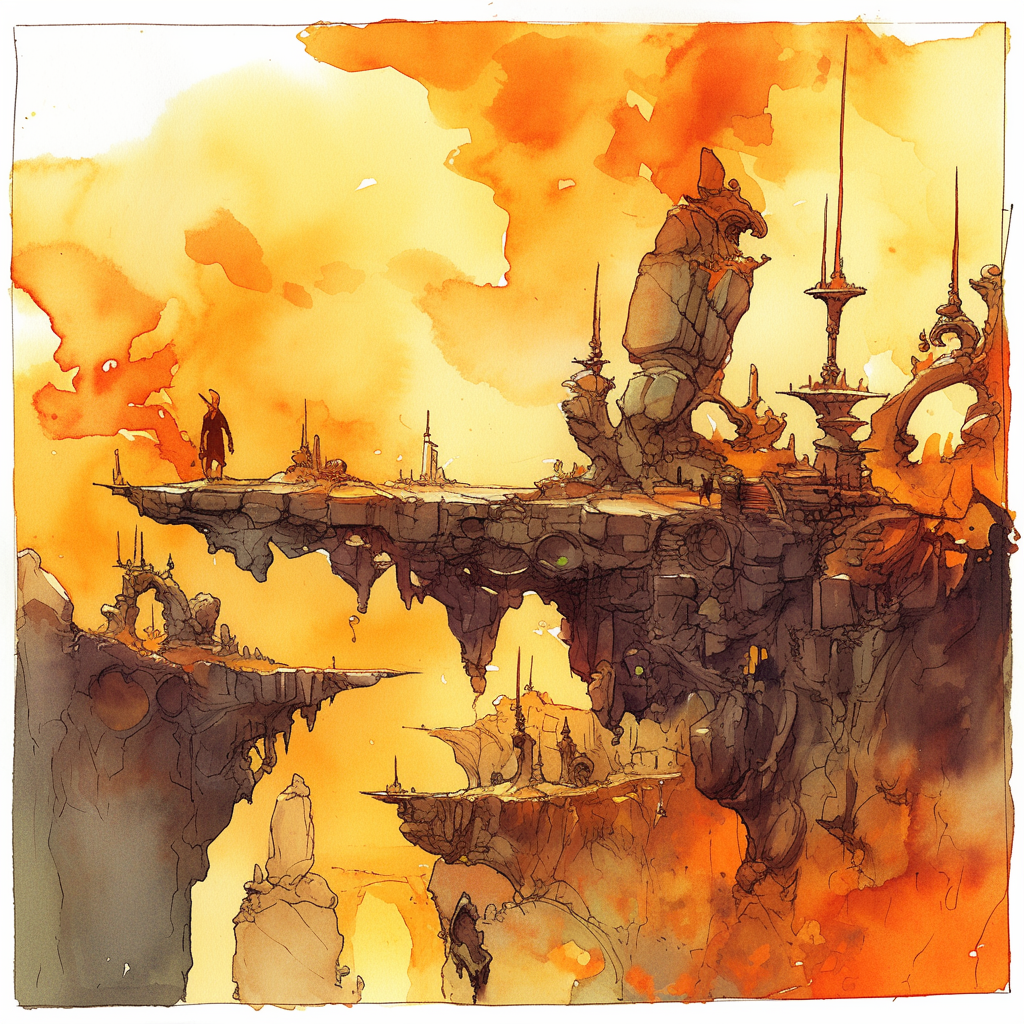
The next plane, between pure chaos and neutrality, actually does have a gate town. The plane’s called Discordia and the gate town is Vergadain’s kip in the Dwarven Mountain. Vergadain actually has a temporary home there, as well as on the Outlands, just to show off. ‘Course the most prominent power here is Eris. She’s the Greek power of strife, who set up kip here after being kicked out of Arborea for being a troublemaker. Hmmph. “All powerful” indeed! Her realm’s got a bunch of golden apples growing in it that can cause madness in anyone who touches them. I hear tell that the burg of Kallisti in the Outlands used to be a part of her realm before it wandered to the Outlands.
Oh, yeah, that’s right. The various sites, burgs, and features of this lane all wander around at random. Don’t try and find your way by the landmarks of the place, ’cause they won’t be there in a couple hours. You can go from frozen tundra to a burning desert right next to each other. The only ones who seem to be able to find their way around are a bunch of intelligent three-foot tall insects called blattids. A prime companion told me they looked just like a giant version of some bug called a cockroach. If we hadn’t hired one as our guide, I’d still be stuck on Discordia. Chaotic and neutral berks do seem to have an easier time of finding their way around this plane.
Perdition is the plane between neutrality and chaotic evil. Just as K’un Lun exemplified the most positive aspects of neutrality, Perdition exemplifies the most negative. Specifically, Perdition is the plane of apathy. Not the depression of the Grey Waste, but Perditionites just don’t care about anyone or anything but themselves or what relates to their own gratification. The whole plane appears to be underground.
MB: Are you sure it wasn’t Pandemonium?
L: Pretty sure. No winds, no madness, just tunnels and darkness. Never seen a part of Pandemonium that fit that description. It also seems to have a lot more life in it than Pandemonium, but not that this is a good thing. The fauna consists of umber hulks, shriekers, slimes, moulds, puddings, rats, bats, aboleth, and other critters common in the prime “underdark.” Mind flayers are also pretty common, especially considering where the gate to Perdition is: in a cavern in Ilsensine’s realm. That in itself is enough to keep it hidden from all but the most brave and barmy of cutters.
A couple of powers have realms here. Anshar and Nergal of the Babylonian Pantheon have realms here. The Finnish powers Tuoni and Tuonetela have their realm, Tuonela, here.
MB: Wait a minute. I thought Tuonela was on Pandemonium.
L: I don’t know about that. I do know that they do have a kip in Perdition, whether or not they have a different place they call home.
The next plane, neutral tending towards evil, is Nether. The gate to Nether can be found in a pit of quicksand in Semuanya’s Bog. It’s hard enough to find without all the giant beasties that live in the area trying to make you into their next meal. Nether itself is an endless plain of mud. It’s impossible to keep anything clean there. You can still walk over the mud, since it’s usually half-frozen. The place is bitterly cold. Nether is the plane of death-not always evil, but definitely not good.
As for realms and powers, there’s not many in Nether. The druids of the Shadow Circle seem to have some bond to this plane, but I don’t know if they have someone they call a god here. There’s a Slavic power called Marena, goddess of death and beauty, who’s got a fabulous palace of silver icicles amidst the mud here. Another realm, the Land of Eternal Rain, is one of the few places you’ll find any vegetation. It’s the realm of Tlaloc, an Aztec power. Apparently he can draw the rain from this realm to anywhere on the Prime. Ma Yuan, the “killer of the gods,” used to dwell here before he was imprisoned in either Carceri or Pandemonium. He killed ten berks who called themselves gods in the Chinese pantheon before being imprisoned, and their bodies are buried at a site called the Gods’ Graveyard. It shows you just how immortal the powers truly are.
The next plane, Sheol, between evil lawfulness and neutrality, actually does have a gate town. The town’s called Ceras, and it’s situated between two giant stone horns. They may be from the same creature that gave ribcage its ribs. The berks in Ceras don’t even know they’re sitting on a gate, but you’d swear they’re hiding something. I’ve never seen a more inhospitable, xenophobic indep town. Don’t expect a warm welcome there. In fact, I wonder why they haven’t actually slid into Sheol yet, except they may be even more evil than that plane.
Sheol has a dark brown sky, which sometimes makes it look like you’re in a giant cavern. The gravity’s at a 45-degree angle, so everything goes downhill. The few realms and burgs here are on the few rare level spots.
At first, the plane doesn’t seem so bad. There’s almost no crime, and people seem to work together. However, a berk can expect no mercy or compassion from the petitioners of this plane. The different burgs in Sheol are in a constant state of war with each other. And freedom is every bit as rare as crime. Some folks are fooled by the pleasant exterior put on by the natives into believing this place isn’t really so evil. But it definitely has a dark underside that’s best avoided.
The only realm I found here was Mictlan. It’s the realm of the Aztec power Mictlantecuhtli. He’s about the only Aztec power who doesn’t live on the prime. I’m sure there are more powers here, but I didn’t stay long enough to find out.
Thebestys is actually the gate-town to the neutral-tending-towards-lawful plane, Purgatory. Good luck getting past Thoth to find it. He only allowed my party to go past if we promised not to tell the gate’s exact location—seems he doesn’t really like information to remain hidden either.
Purgatory is mostly made of air, with a spiralling strip of land circling up and up eternally. The strip is said to be 326 miles across, and infinitely long. You can’t get up the strip without working diligently at something. The locals here spend eternity working and working for no other reason than to work their way up the spiral. It’s not like on Bytopia, where folks work to produce something of value. Purgatorians work simply for the sake of working. Some believe that they’ll advance to some upper plane if they work hard enough, but most just seem to be content to stay here and work forever. A lot of petitioners here are bald dwarves from some desert prime world. The only native who doesn’t try and work his way up the spiral is Ptah, the Egyptian power, who seems content to have his realm set up at the base of the spiral. Some say his realm somehow sits both at the base and the peak of the spiral, but that sounds like barmy-talk to me.
So there you have it. Eight new Outer Planes: K’un-Lun, Avalon, Pangea, Discordia, Perdition, Nether, Sheol, and Purgatory.
MB: And how many layers did you say each of these planes had?
L: Just one each.
MB: One? That sounds suspicious. Why only one?
L: Easy. Without all the planewalkers here, confusing the plane with all their different outlooks and variations on its alignment, only one layer is needed. Ideas have power, and if more ideas went to these planes I’m sure they’d grow some new layers.
MB: I don’t know. I mean, where’s your proof? It seems more likely to me that you just found some realms or layers on the known planes that are new rather than …
L: … rather than I know what I’m talking about?
MB: No, no, not that. It’s just…well, Pangea could easily be part of the Beastlands or Ysgard, Perdition sounded a lot like Pandemonium, or possibly a new layer of the Abyss…
L: [growls] I am NOT a liar or a fool. Be skeptical if you wish. You have the truth. This interview is over. [footsteps]
MB: Well, uh, there you, uh, have it. [gulp] Leir the Explorer and his claim of the newly discovered Planes of Cordance. How do you turn this thing off now? Is this how I—
See Also: The Splinterlands
Source: Greg Jensen, maps by Jon Winter-Holt. Canonwatch: This is some serious plane-changing homebrew right here! Whis is why it was presented as rumour and hearsay in this original imagination from the 1990s 2e days. I’ve revisited the idea since the site came back from the dead-book in 2023, and this time flavoured the Planes of Cordance as planelettes of the Splinterlands, growing from the seeds of Yggdrasil and tended by three mysterious rilmani-adjacent beings known as the Yggdrani. This way you can use the concepts of these additional planes, which I think as pretty neat (and I’m allowed to say that as they were Greg’s idea 😉 but flavour them as extenuated parts of the Hinterlands rather than full-fledged planes themselves. Which is probably less disruptive to the cosmology overall. Anyway—as with everything from the fanon, you do you! I very much hope you enjoy.

